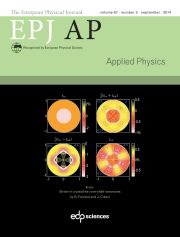Article contents
Interaction between infrared laser modes in Rydberg Matter: redshifted modesin reflection and blueshifted in transmission
Published online by Cambridge University Press: 16 March 2004
Abstract
When an almost single-mode IR laser beam is reflected from an IR window with a deposit of Rydberg Matter on the inner, vacuum face, the laser modes appear red-shifted; thus their maxima are observed at lower laser current. This effect is complementary to the previously reported blue-shifts of IR lasermodes in transmission through Rydberg Matter. Both types of shifts are dueto interaction between the laser modes, now proved by using only twoisolated modes both in reflection and transmission. The general process isstimulated Raman scattering. Rydberg Matter is here formed from Rydbergstates of K atoms and nitrogen molecules inside a vacuum chamber. Atheoretical description is given that involves slow decay or increase in theenergy of the photons interacting with the Rydberg Matter, depending on thetemperature of this matter. This means that the two isolated modes studiedmay become almost resonant within certain frequency ranges. The energyincrease (frequency blue-shifting) of photons passing hot Rydberg Matter hasbeen reported previously. The description used explains both thered-shifted reflection and the blue-shifted transmission results.
Information
- Type
- Research Article
- Information
- Copyright
- © EDP Sciences, 2004
References
- 3
- Cited by

